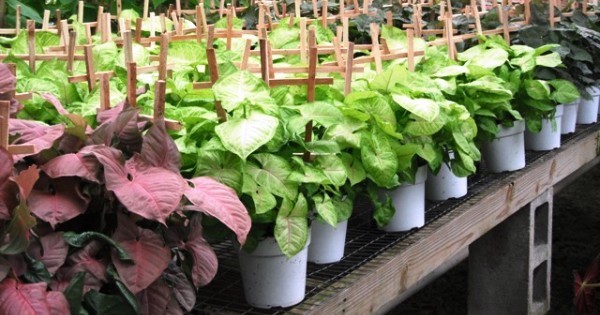Everyone appreciates the benefits of beautiful, comfortable living environments. Feng Shui takes the approach that your surroundings affect not just your level of material comfort but also your physical and mental health, your relationships, and your worldly success. Feng Shui (pronounced "fung shway") examines how the placement of things and objects within it affect the energy flow in your living environment, and how these objects interact with and influence your personal energy flow. Your personal energy flow affects how you think and act, which in turn affects how well you perform and succeed in your personal and professional life. Feng Shui affects you every moment of the day — whether you're aware of it or not.
The meaning of the term Feng Shui
Feng Shui is a term composed of two Chinese words: feng (wind) and shui(water). Wind and water are the two natural elements that flow, move, and circulate everywhere on Earth. They are also the most basic elements required for human survival. Wind — or air — is the breath of life; without it, we would die in moments. And water is the liquid of life; without it, we would die in days. The combined qualities of wind and water determine the climate, which historically has determined our food supply and in turn affects our lifestyle, health, energy, and mood. These two fundamental and flowing elements have always profoundly yet subtly influenced human individuals and societies.
The essence of these life-giving elements is chi, or life force. Wind and water are direct carriers of chi, as their flowing quality reflects their essential nature. All living organisms are largely composed of these two elements. Thus, Feng Shui is the art of designing environments in harmony with the flow of chi through one's living space, and this flow supports and enhances one's personal chi or life force.
Fengshui Yin and Yang Explained
Yin / Yang are two halves that together complete wholeness. Yin and yang are also the starting point for change. When something is whole, by definition it is unchanging and complete. So when you split something into two halves – yin / yang, it upsets the equilibrium of wholeness. This starts both halves chasing after each other as they seek a new balance with each other. The word Yin comes out to mean “shady side” and Yang “sunny side”. Yin Yang is the concept of duality forming a whole. We encounter examples of Yin and Yang every day. As examples: night (Yin) and day (Yang), female (Yin) and male (Yang). Over thousands of years quite a bit has been sorted and grouped under various Yin Yang classification systems. In Feng Shui, plants represent the wood element (a life giving element that oozes Yang energy). You’ll, therefore, would like to balance the right type of plants or Yang energy with Yin elements, such as shady areas that offer protection from the midday sun. Although plants in Feng Shui generally represent Yang energy and need a fair amount of sunlight to flourish, some plants are naturally Yin plants and grow in the shade.
Syngonium: A Perfect Feng Shui Plant
Commonly known, as Goosefoot, nephthytis or Syngonium podophyllum is a Feng Shui plant. This plant has a distinctive leaf, which changes from arrow shaped to a five lobed form as it matures. The five lobed shape represents the five elements; water, fire, earth, wood and metal thus provides the perfect balance of Yin Yang as the new leaves are shiny and the older ones are matt.
The five lobed shape of Syngonium podophyllum/ Goosefoot leaves represents the five Feng Shui elements; water, fire, earth, wood and metal. Thus it perfectly balances Yin and yang energy and encourages positive chi or energy. It also cleanses the air. The goosefoot, or Syngonium podophyllum, has the inspiring; ‘upward’ wood energy, which is associated with the east or southeast. Place it on a desk or workstation to let its spirit of spring; dawn, youth and new ideas aid inspiration.
For indoors, place the syngonium or goosefoot plant in front of a sharp corner or angle that maybe cutting Chi. This will help reduce stress, anxiety, sleep disorders and arguments. Chi always flows along a smooth wall or surface until it meets a sharp angle where it creates turbulent energy at the point. Placing a Feng Shui plant in front of the angle will soften it.
Syngonium: Air Purifying Plant
Syngonium plants are not just decorative, they have the ability to cleanse the air you, breathe and act as anti-pollutants. These plants can reduce components of indoor air pollution, even volatile organic compounds such as benzene, formaldehyde, toluene, and xylene. They also reduce airborne microbes and increase humidity.
Researchers from NASA and other organizations have approved this plant as an air purifier, and it tops the list. Syngoniums absorb pollutants into their leaves, and the toxins go to the root zone where they are transformed into nutrients for the plant. Houseplants also emit water vapors that help the plant pull polluted air to the roots where the plant converts the toxins to plant food.
Syngonium: Care Instructions
Caring is an easy task for this species. Syngonium/ Goosefoot plant/ Arrowhead Vine is an excellent houseplant for low light (no matter what you call it!). Popular for more than a hundred years, arrowhead plant has withstood the test of time because it's both attractive and easy to grow. Young arrowhead plants are bushy and usually pretty full, making them attractive indoor plant choices for coffee tables, side tables, and other surfaces.
Light: Does best in bright filtered light. It should never be subjected to direct sunlight, as that would scorch the leaves. If you notice more growth on one side then turn the pot because that side is likely to be receiving more light (this will even growth out).
Watering: Keep the soil moist during the growing period. Allow the plant to dry out slightly between waterings in winter.
Special Care: Clean the leaves every fortnight to free them from dust accumulation. It would also help a lot to mist the plant as often as possible with water. Pruning during summer will encourage new growth and make the plant bushier in appearance.
Syngonium: Hard to Kill Plant
Yes, the Syngonium podophyllum also known as Nephthytis or Arrowhead plant is a hardy houseplant. This tropical, slow-growing plant works well as either a potted or a hanging plant and generally can survive neglect in its care. It surely brings a bit of greenery to your interior decor without requiring too much maintenance. It may have setbacks from time to time, but it always rallies. It can appear to be almost dead, but if you get them back on the right track, with proper lighting and watering, they become beautiful again! That’s why they are hard to kill and good for those who cannot tend too much care to live plants.
There is so much to this one plant, Syngonium. Isn’t it? Its perfect as per Feng Shui, purifies the indoor air and also easy to care for. It is one of the best houseplant you can aim for. Rolling Nature has a variety of Arrowhead Vine/ Goose Foot Plant (Syngonium Podophyllum) available:
Green Variegated Syngonium Var. Butterfly
Pink Syngonium Var. Neon Robusta
Syngonium Red Line Var. Roxanne
White Syngonium Var. Holly M
So what are you waiting for? Grab some Syngonium green beauties for your home or office in unique pot collections. Wishing you luck and much more fresh air when you get it for you!


2 comments
what about sniping of syngonium plant , like from where and when and what to avoid or take care while sniping ?
Please inform me of further plants.herbs etc. That is easy to care for and beneficial